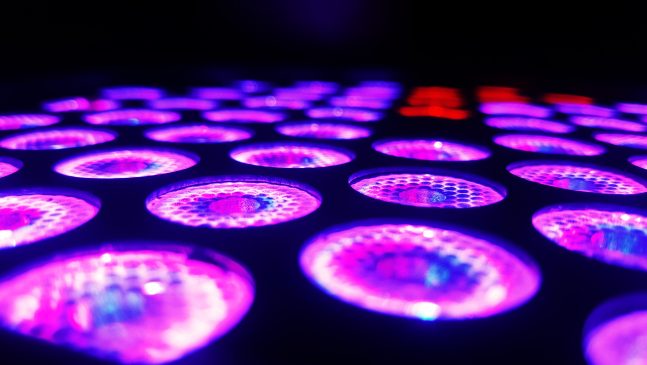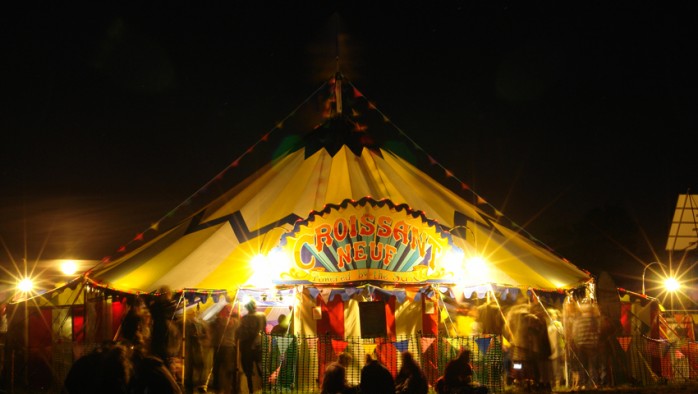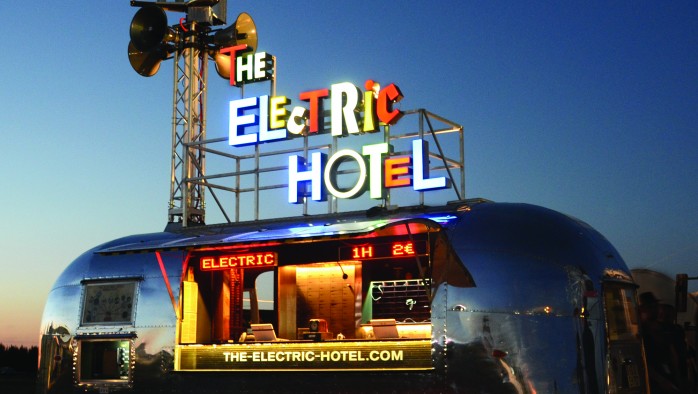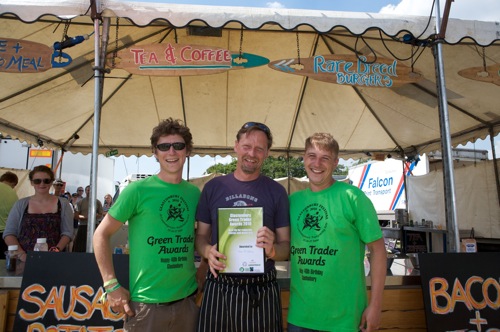How significant is the impact of changing traditional stage lighting for LEDs on fuel and equipment needed?
The impact of LED stage lighting on efficiency and fuel use can be huge – in the example below a saving of 70% was made. There are also other ways to reduce main stage fuel use, for example using smaller gensets or hybrid units to manage low loads overnight.
In this example scenario PAR lights, with a conventional lamp of 650 W, are changed for an LED light of 36 W saving 614 W per light.
Let’s say that during a 10hr show the total time the PAR light is actually used is approx. 2hr. If in a stage 50 PARs are used, the energy savings will be 614 x 50 x 2 = 61,4 kWh. As a result of the change, the total power demand of the stage will be reduced by 30.7 kW.
If in this example the original maximum power demand of the total stage was 80 kW, a generator of minimum 100 kVA would have had to be used. The average load on the generator would be approx. 20 kW. This load on a 100-kVA diesel generator leads to an efficiency of approx. 18%. Per show day, the fuel consumption of a generator in this situation will be approx. 110 litre diesel.
After replacing the conventional lamps with LED lights, the maximum power demand of the total stage will be 50 kW. A generator of minimum 60 kVA will be needed. The average load on this generator then will be approx. 14 kW. This load on a 60-kVA diesel generator leads to an efficiency of approx. 23%. Per show day, the fuel consumption of this generator in this situation will be approx. 32 litres diesel.
So changing the conventional 650 W PAR lights into 36 W LED PAR lights would save 70% of fuel consumption and therefore 70% of the stage’s CO2 emissions.
This huge effect is not only because of lower power consumption by the lights itself, but also because of a reduction of the peak demand. Because a smaller generator can then be used, the average load on this generator is relatively higher and thus the efficiency of the generator is also higher. It is worth noting that designing out large demand peaks in power systems is desirable, enabling smaller generators and fuel savings, but in the case of stages, it is acknowledged that there will be peaks due to the quality of the show.
Running a main stage with less power than a domestic hairdyer
Croissant Neuf Summer Party uses solar power instead of diesel generators on site to power the stages and lights. They have never used anything but solar and wind generators. This saves over 1.5 tonnes of CO2 for the festival. The LED lighting system in the Big Top uses less power than an average household TV. The P.A. system in the big top uses less power than a hair dryer but still has a sound output equivalent to a 10KW P.A.
All the caterers and market traders on site use renewable energy. The bar uses hand pumps and all their lighting is low energy LEDs, powered by dedicated solar panels. The commission of an Environmental Audit of activities in 2010 showed that festival goers at Croissant Neuf Summer Party generated on average less than 50% of the CO2 they would otherwise generated if they’d stayed at home and had a normal weekend.
Croissant Neuf is powered 100% by renewable energy due to a conscious decision to buy solar panels and wind turbines instead of diesel generators when the organisers, being keen environmentalists, endeavoured to expand their festival and cafe that originated in 1986.
The original Croissant Neuf consequently gave birth to the Green Roadshow- a travelling environmental education centre with the circus big top at its focal point. All electrical appliances were run entirely on power solar and wind power, including the big top lights and PA and even the hairdryers and laptops in the living vans. This dedication ensured continued pursuit and commitment to renewable technology, conservation, battery powered transport, sustainable living and woodland management. Whilst touring as The Green Roadshow, Croissant Neuf continued to appear as a renewably powered venue at Glastonbury and at other festivals such as the Big Green Gathering.
A massive solar generating unit capable of creating enough power to drive a 10kilowatt P.A system was installed at the turn of the millennium, as music became the main focus of Croissant Neuf. This masterpiece of modern technological engineering was titled The Solar System. Within a few years Croissant Neuf had created the first fully functioning solar rig of its kind that could deliver perfect sound for anything from solo artists through to a 40 person gospel choir. Each year Croissant Neuf Summer Party attempts to improve its sustainability.
Charging ahead! A mini, mobile phone charging power station.
Brainchild of artist Sebastian Fleiter it is a shining example of audience engagement in renewable energy provision. It offers an interactive service for charging phones in the form of pedal power for a free, quick, and fun energy supply at festivals. The brightly polished 1960s chrome camper van also has solar cells, wind turbines and a pump storage hydro power unit which allows it to run 400 mobile phone charging points with lockers that can be availed of for a small fee, allowing them to charge over 3000 phones a day.
Technical challenges in the first year of this innovative and ambitious non-profit business included the underestimation of the requirements for mobile phone charging. They found that standards for phones are not as common as you might think, and there are many different socket types.
To overcome this difficulty around half of all charging points can be used with any model, while the other half have adapters for mobile phones with unique sockets. This service has ended up being a pragmatic idea for providing renewable electricity to festival goers, originating from an idea incorporating the worlds of art and technology.
Currently, new power generators are being developed for The Electric Hotel, and they have received funding from the European Union EFRE programme, as well as various awards for their endeavours.
The Electric Hotel not only provides an affordable and necessary renewable energy powered service, but simultaneously informs and engages festival goers in alternative energy procurement.
Gas and cost saving techniques for catering aren’t just hot air.
Green Street Catering came to dramatically increase their energy efficiency when they realised just how much money was being lost due to the inefficient use of fuels in their service at festivals and outdoor events in the UK. Tim Spence, of Green Street Catering, realised that only four or five hours of the day required all the gas cooking facilities to be on, out of the eighteen hour trading day. Staff were re-trained to be vigilant in only igniting new wok burners when other burners were at full capacity, and to not have them all running all throughout the day as they had done previously. This saved an estimated £6,000 in one summer, which is equal to the cost of a pitch for a food trader at a large festival. This new approach, including setting new standards as well as retraining staff, more than halved gas consumption and costs at Green Street Catering.
Green Street Catering were even winners of an award for best idea for reducing energy and water use, as part of the Green Traders Award 2010 at Glastonbury run by Greenpeace, with the help of NCASS (the Nationwide Caterers Association). Green Street Catering are a prime example of just how important energy efficiency and staff engagement and participation are in improving sustainability in energy provision at festivals and outdoor events.




